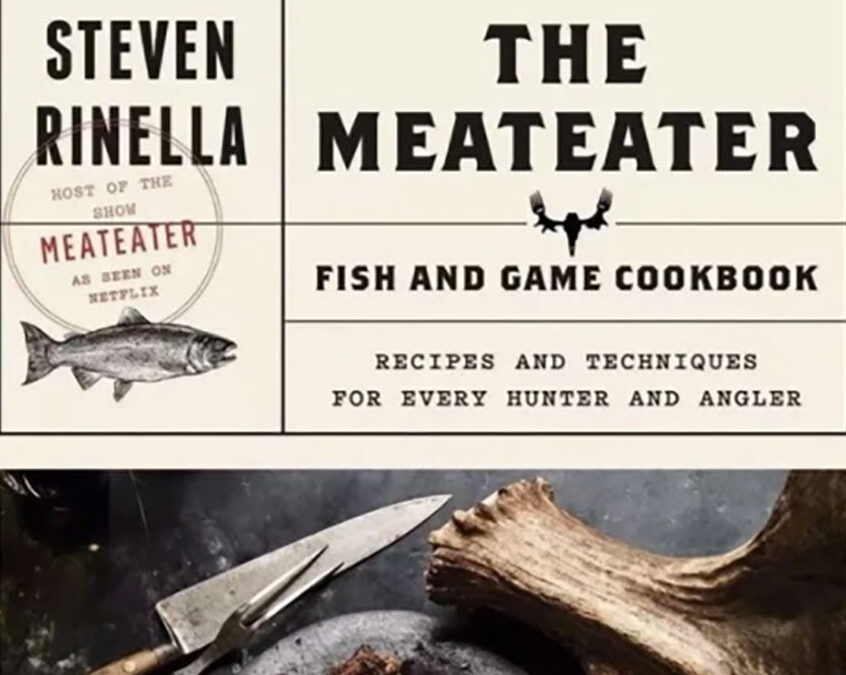Introduction to Upland Birds from THE MANEATER FISH AND GAME COOKBOOK
My early exposure to upland birds was pretty limited. We had almost zero pheasants in the area of Michigan where I grew up and there was no dove season. i never ran into any quail, sharptail grouse or chukar. the few turkeys in the state at that time were managed through a lottery-draw system, and even those were located well north of my home. (the place is now crawling with turkeys, one of the great conservation success stories of our time.)
What we did have available were ruffed grouse and woodcock, the woodcock being more sporadically available than the ruffed grouse. They’d migrate through in October, usually in small numbers but now and then in unimpressive groupings. I remember one time when I was running my trapline for fox and flushed a dozen or so woodcocks out of a single stand of poplars. i ran back to my truck and grabbed my Savage model 24C, a break-open combination gun with a .22 rifle barrel mounted over a 20-gauge shotgun barrel. i went back into the poplar grove and kicked up another half-dozen birds. I downed two of them, making that my single best year for woodcocks. As for the ruffed grouse, I can’t remember my brothers and I ever killing more than five or six in any given season. The ones we did get were shot incidentally while chasing more favored quarry such as cottontail rabbits, squirrels and waterfowl. Those few upland birds that did come into our kitchen were treated as casually as store-bought chickens. They ended up in stir-fries, or else cut into leg and breast pieces that were browned in a skillet and then tossed into an oven. That I never developed any strong, well-informed opinions about cooking and eating upland birds should go without saying.
Then Montanan happened. I moved out there in the mid-nineties to attend graduate school. Suddenly i was hunting for upland birds that I barely knew existed a year or two earlier. In the mountains I had access to not only the familiar ruffed grouse, but also spruce grouse and dusky grouse. Turkeys were available to the east and northwest of where I lived. Pheasants were scattered throughout the larger valley bottoms. Out on the Great Plains, less than a day’s drive away, I could find sharptail grouse, sage grouse and Hungarian partridge. In a normal hunting season I’d be dealing with five or six species of birds; I encountered even more in my out-of-state travels, which were increasing in frequency. Several species of ptarmigan in Alaska; bobwhite quail in southern Illinois; chukar in Wyoming. At some point thereabouts, I went from being naive to experienced in the ways of upland birds.
The most important thing that I learned about cooking them is that they can’t be treated like domestic chickens and turkeys. This might seem perfectly obvious to many folks, but it’s something that begs to be pointed out in any discussion around cooking upland birds. Many home cooks treat store-bought chicken as a blank slate upon which to add additional layers of flavor in the form of sauces and accompaniments with little consideration for the actual meat. The flesh is regarded as bland and relatively fail-safe — it’s almost hard to mess it up. That’s because store-bought birds are usually just a few months old, they are grossly over-fed and they’ve never flown or walked more than a handful of steps in any one direction. They are fatty blobs of nothingness. upland birds, on the other hand, have qualities that are far more nuanced. They are lean and vigorous creatures that are powerful fliers. Some of them grow to be several years old, or older. They are far more flavorful and richly textured than domestic fowl, and also far less forgiving.
Instead of using these birds as characterless base upon which you build your dish, you need to use a gentler approach that highlights their idiosyncratic flesh and wild beauty. Half-assed attempts at cooking them can result in meat that is tough and dry. believe me, i have eaten my way through enough mess-ups to know how true that is. It’s my hope that by following the procedures and recipes laid out in this chapter [on Upland Birds in THE MEATEATER FISH AND GAME COOKBOOK] you’ll avoid similar mistakes and produce meal upon memorable meal with your hard-earned birds. Anyone who has been startled and then thrilled by the explosion of a pheasant rising up suddenly from the brush beneath your boots, or by the silence-shattering gobble of a wild turkey in the spring woods, will agree that these birds deserve every bit of love that a cook can muster.
—Steve Renella
Editor’s Note: This introduction is excerpted from THE MANEATER FISH AND GAME COOKBOOK available in the Sporting Classics Store.



